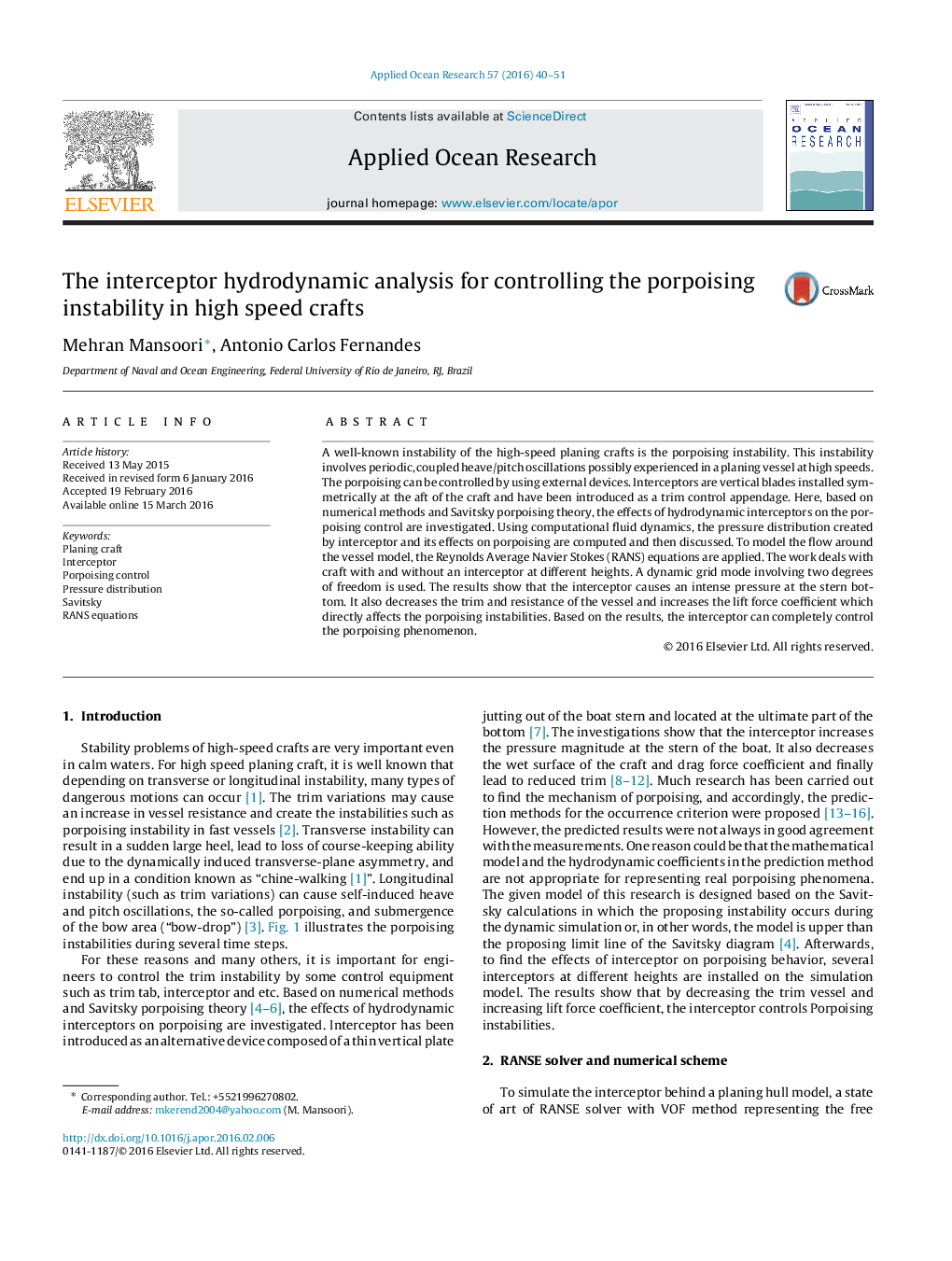| Article ID | Journal | Published Year | Pages | File Type |
|---|---|---|---|---|
| 1719829 | Applied Ocean Research | 2016 | 12 Pages |
Abstract
A well-known instability of the high-speed planing crafts is the porpoising instability. This instability involves periodic, coupled heave/pitch oscillations possibly experienced in a planing vessel at high speeds. The porpoising can be controlled by using external devices. Interceptors are vertical blades installed symmetrically at the aft of the craft and have been introduced as a trim control appendage. Here, based on numerical methods and Savitsky porpoising theory, the effects of hydrodynamic interceptors on the porpoising control are investigated. Using computational fluid dynamics, the pressure distribution created by interceptor and its effects on porpoising are computed and then discussed. To model the flow around the vessel model, the Reynolds Average Navier Stokes (RANS) equations are applied. The work deals with craft with and without an interceptor at different heights. A dynamic grid mode involving two degrees of freedom is used. The results show that the interceptor causes an intense pressure at the stern bottom. It also decreases the trim and resistance of the vessel and increases the lift force coefficient which directly affects the porpoising instabilities. Based on the results, the interceptor can completely control the porpoising phenomenon.
Related Topics
Physical Sciences and Engineering
Engineering
Ocean Engineering
Authors
Mehran Mansoori, Antonio Carlos Fernandes,
